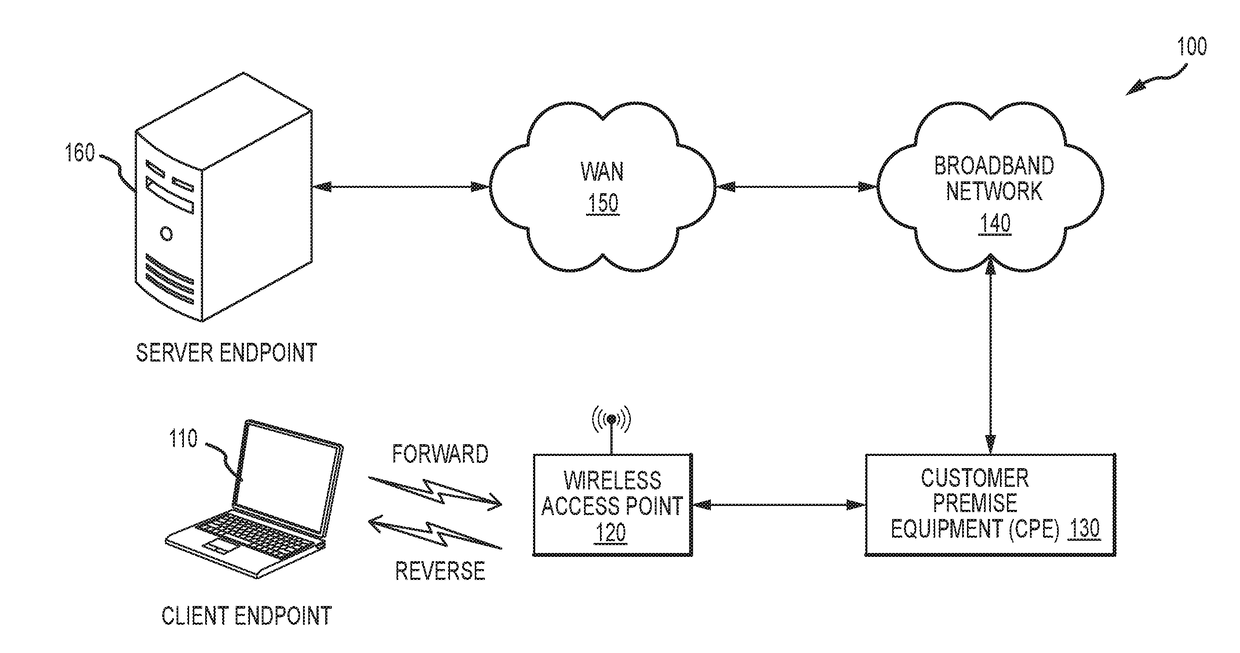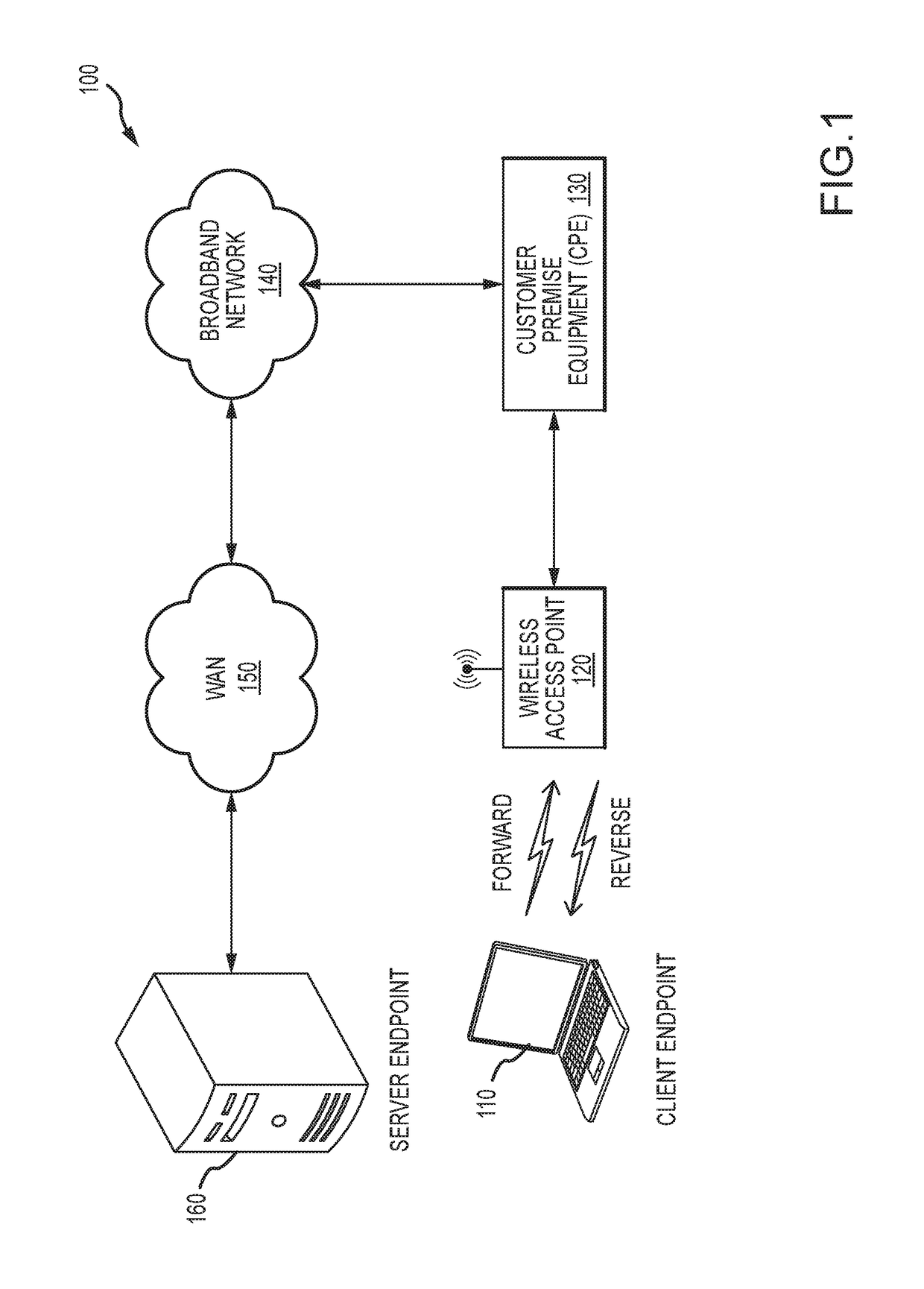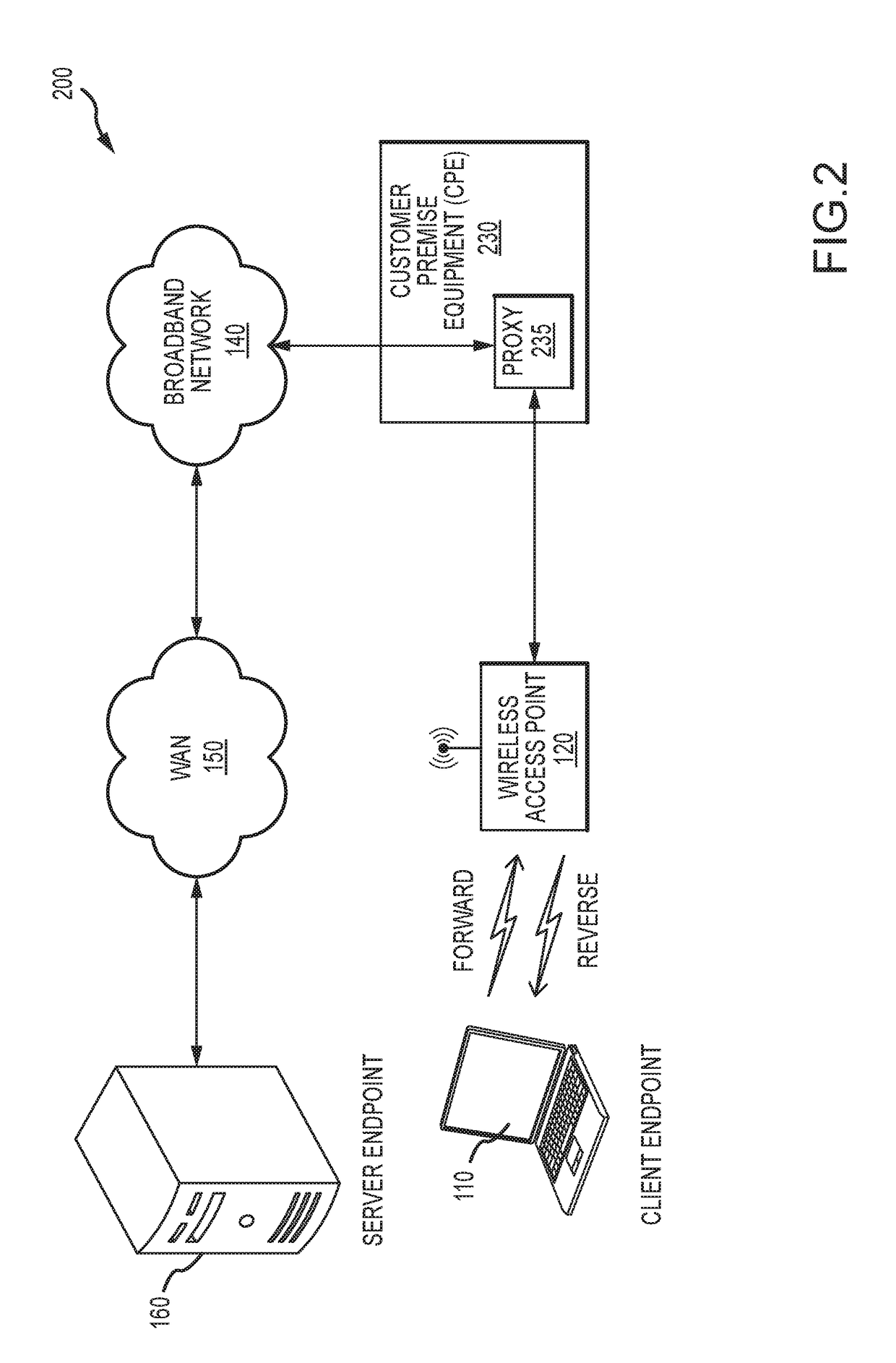Application characterization using transport protocol analysis
a technology of transport protocol and application characterization, applied in the direction of digital transmission, data switching network, electrical apparatus, etc., can solve the problems of high cost of products, many dpi techniques cannot be used, and many of these approaches are expensiv
- Summary
- Abstract
- Description
- Claims
- Application Information
AI Technical Summary
Benefits of technology
Problems solved by technology
Method used
Image
Examples
Embodiment Construction
[0014]In the following detailed description, numerous specific details are set forth by way of examples in order to provide a thorough understanding of the relevant teachings. However, it should be apparent that the present teachings may be practiced without such details. In other instances, well known methods, procedures, components, and / or circuitry have been described at a relatively high-level, without detail, in order to avoid unnecessarily obscuring aspects of the present teachings.
[0015]FIG. 1 illustrates an example of a high-level block diagram of a communication network architecture that supports transferring data between endpoints via transport protocol connections established according to one or more connection-oriented transport protocols and classifying such connections. One example of a connection-oriented transport protocol is TCP (Transmission Control Protocol, an OSI Layer-4 protocol). With TCP, data is transferred in units known as “TCP segments” (which may also be...
PUM
 Login to View More
Login to View More Abstract
Description
Claims
Application Information
 Login to View More
Login to View More - R&D
- Intellectual Property
- Life Sciences
- Materials
- Tech Scout
- Unparalleled Data Quality
- Higher Quality Content
- 60% Fewer Hallucinations
Browse by: Latest US Patents, China's latest patents, Technical Efficacy Thesaurus, Application Domain, Technology Topic, Popular Technical Reports.
© 2025 PatSnap. All rights reserved.Legal|Privacy policy|Modern Slavery Act Transparency Statement|Sitemap|About US| Contact US: help@patsnap.com



